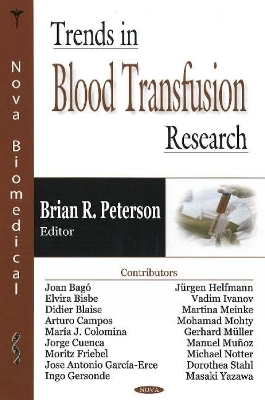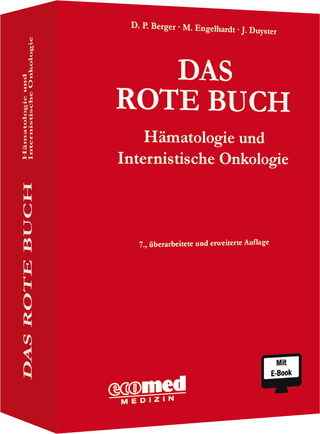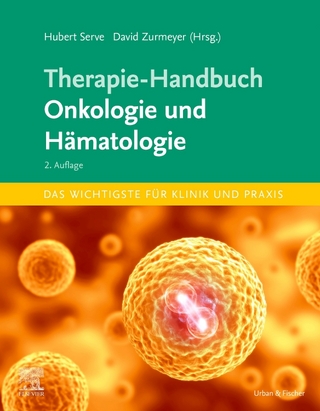
Trends in Blood Transfusion Research
Seiten
2006
Nova Science Publishers Inc (Verlag)
978-1-60021-288-8 (ISBN)
Nova Science Publishers Inc (Verlag)
978-1-60021-288-8 (ISBN)
Although blood transfusion saves lives and reduces the rate of morbidity in many clinical diseases and conditions, it is associated with certain risks. A significant proportion of adverse events may occur as a result of errors in preparation, ordering or administration of blood and blood products. The book contains the research in this field.
Although blood transfusion saves lives and reduces the rate of morbidity in many clinical diseases and conditions, it is associated with certain risks. A transfusion-related adverse event, also called transfusion reaction, is any unfavourable event occurring in a patient during or after blood transfusion. About 0.5% to 3% of all transfusions result in some adverse events, but the majority of them are minor reactions with no significant consequences. In general, transfusion-related adverse events are categorised as infectious and non-infectious. However, there are other classifications in the literature based on time of occurrence (i.e. acute versus delayed) or physiological mechanism (i.e. immune mediated versus non-immune mediated). A significant proportion of adverse events may occur as a result of errors in preparation, ordering or administration of blood and blood products. The book contains the latest research in this essential field, which has been revolutionised in recent decades.
Although blood transfusion saves lives and reduces the rate of morbidity in many clinical diseases and conditions, it is associated with certain risks. A transfusion-related adverse event, also called transfusion reaction, is any unfavourable event occurring in a patient during or after blood transfusion. About 0.5% to 3% of all transfusions result in some adverse events, but the majority of them are minor reactions with no significant consequences. In general, transfusion-related adverse events are categorised as infectious and non-infectious. However, there are other classifications in the literature based on time of occurrence (i.e. acute versus delayed) or physiological mechanism (i.e. immune mediated versus non-immune mediated). A significant proportion of adverse events may occur as a result of errors in preparation, ordering or administration of blood and blood products. The book contains the latest research in this essential field, which has been revolutionised in recent decades.
The Concept of Compatibility in Immunohematology; Red Blood Cell Transfusions in the Era of Reduced Intensity Conditioning Allogeneic Stem Cell Transplantation; Antifibrinolytics in Surgery; Platelet Rich Plasma for Clinical Applications; Autologous Blood Salvage in Major Surgery; Optical Evaluation of Hemolysis; Index.
| Erscheint lt. Verlag | 20.12.2006 |
|---|---|
| Zusatzinfo | Illustrations |
| Verlagsort | New York |
| Sprache | englisch |
| Maße | 260 x 180 mm |
| Gewicht | 599 g |
| Themenwelt | Medizinische Fachgebiete ► Innere Medizin ► Hämatologie |
| ISBN-10 | 1-60021-288-3 / 1600212883 |
| ISBN-13 | 978-1-60021-288-8 / 9781600212888 |
| Zustand | Neuware |
| Haben Sie eine Frage zum Produkt? |
Mehr entdecken
aus dem Bereich
aus dem Bereich
Hämatologie und Internistische Onkologie
Buch | Softcover (2023)
ecomed-Storck GmbH (Verlag)
129,99 €
Buch | Softcover (2024)
Urban & Fischer in Elsevier (Verlag)
54,00 €
Buch | Softcover (2023)
Deutscher Ärzteverlag
29,99 €


